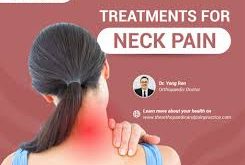Shoulder pain can range from mild to severe and can come on suddenly or build up over time. Possible shoulder pain causes include fractures, tissue inflammation or tears, joint or ligament instability, and arthritis. It can also stem from conditions that don’t directly involve the shoulder at all.
Treatment for shoulder pain will vary depending on the specific condition. Treatment options may include rest, medication, and physical therapy. In some serious cases, surgery may be recommended. shoulder dislocation surgery cost in mumbai
This article explains shoulder pain causes. It also suggests when it’s time to see a healthcare provider and the various tests they may order to help make a diagnosis and develop a treatment plan for you.
shoulder pain causes
Verywell / Alexandra Gordon
What Could Cause Shoulder Blade Pain?
Shoulder Pain Causes
Considering your shoulder joint’s complex anatomy, there are many potential shoulder pain causes—from muscle tears and tendonitis to osteoarthritis.
The location of your shoulder pain can help your physician zero in on which part of the joint is affected.
Everything You Need to Know About Your Shoulder Joint
Pain Outside of the Shoulder
Several issues can cause pain on the outside of the shoulder. The most common cause is a tear in the rotator cuff,1 which helps lift and rotate your arm.2
Rotator Cuff Problem
shoulder dislocation surgery in mumbai
Four rotator cuff muscles move your shoulder, including the deltoid muscle. There are three main types of rotator cuff problems:
Tendonitis: Inflammation of the tendons (which connect your shoulder muscles to your upper arm bone, or humerus, which is shaped like a ball and fits into a socket in the shoulder blade)2
Bursitis: Inflammation of the bursa (a fluid-filled space)
Rotator cuff tear: The painful result of tendons of the rotator cuff pulling away from the arm bone
Rotator cuff problems cause pain, especially with activities like reaching or throwing. The deep, aching shoulder pain tends to worsen or flare up at night. It can easily wake you up from sleep or make it difficult to fall asleep.
Rotator cuff problems can be associated with a limited active range of motion. Since it’s hard to voluntarily move your injured or inflamed muscle, your shoulder may feel stiff.
But if someone does the work for you by lifting your arm (passive movement), your shoulder will likely move normally.
Research suggests that high blood pressure, as well as other heart disease risk factors are associated with rotator cuff pain and inflammation.3
Is Your Shoulder Pain From Your Rotator Cuff?
Frozen Shoulder
Also called adhesive capsulitis, frozen shoulder is a common condition that leads to joint stiffness and pain, which can be constant. There is also a decrease in both active and passive range of motion.
While many shoulder conditions, including rotator cuff tendinitis, can be associated with frozen shoulder, the cause is often unknown. Risk factors include diabetes, thyroid problems, shoulder surgery, heart disease, or Parkinson’s disease.
Calcific Tendonitis
Calcific tendonitis occurs when calcium crystals are deposited within a tendon, most commonly within the rotator cuff tendons. This condition typically causes progressive shoulder pain that is worse at night and with overhead motions, like putting on a sweatshirt.
Some people develop a chronic case of this form of tendonitis. Many others find that the symptoms resolve on their own over three to six months.4
Front Shoulder Pain
Pain in the front of the shoulder is most commonly related to the biceps tendon—a tendon that attaches deep inside the shoulder. Conditions include biceps tendonitis, biceps tendon tears,superior labrum anterior-posterior (SLAP) tears, and osteoarthritis.
Bicep Tendonitis
Biceps tendon problems usually cause gradual pain at the front of the shoulder that can continue down over the biceps muscle.5 The pain often worsens after repetitive lifting, carrying heavy bags, or overhead activities. It can intensify at night.
Problems with the biceps tendon may also cause a clicking sound when the shoulder is rotated in an arc.
Biceps Tendon Rupture
A biceps tendon rupture may occur if the biceps muscle breaks free near the joint. The symptoms of a biceps tendon rupture include a sudden “pop,” along with an acute worsening of pain, bruising, swelling, and often a lump just above the antecubital fossa (in front of your elbow).6
SLAP Tears
A superior labrum anterior-posterior tear is a specific type of glenoid labrum (cartilage in the shoulder joint) tear. One common cause is a fall on an outstretched hand.
It’s also a common tear in athletes (like baseball pitchers) who throw overhead and workers involved in repetitive overhead activities.7 Symptoms may include deep shoulder pain and a popping sound with movement.
Shoulder Osteoarthritis
With shoulder osteoarthritis, you can have deep shoulder pain or pain at the front of your shoulder, along with stiffness. There is generally a decrease in both active and passive range of motion.
Shoulder arthritis can sometimes be preceded by an injury to the arm, neck, or shoulder that occurred years prior. When severe, it may be treated with joint replacement surgery.8
Pinched nerves are also associated with this type of wear and tear arthritis. This can lead to additional symptoms such as arm numbness.9
Top-of-the-Shoulder Pain
The most common cause of pain in the top of the shoulder is an abnormality of the acromioclavicular joint (AC) joint. Problems of the AC joint include AC arthritis, AC separation, and distal clavicle osteolysis.
AC Arthritis
Arthritis can cause smooth cartilage to wear away, cartilage roughness, and bone spurs, which may limit mobility. Exposed bone and uneven cartilage surfaces may cause crepitus (a grinding sensation), especially when you reach overhead or across your chest.
AC Separation
AC separation, also called a shoulder separation, can occur after a fall right onto your shoulder that injures the ligaments surrounding your AC joint.10 Depending on the severity of your ligament injury, a bump may form above your shoulder due to the separation of your scapula, or shoulder blade, from your collarbone (clavicle).
Distal Clavicle Osteolysis
Distal clavicle osteolysis causes sharp or aching pain at the end of the collarbone. It most commonly affects weightlifters or others who repeatedly lift or carry heavy objects.11
The clavicle provides supports the scapular, allowing the arm to move freely. A problem with any part of this “architecture” can cause pain, weakness, or instability in the shoulder.
Pain All Over the Shoulder
The tendons, ligaments, and muscles in your shoulder keep it stable. If these tissues become loose or torn, shoulder instability or dislocation may occur.
Shoulder Instability
As the name suggests, instability causes loosening of the joint. It can be caused by a traumatic injury (dislocation) or from overuse. Shoulders that feel unstable may feel as though they will pop out of the joint.12
Multidirectional instability can result from chronically loose ligaments.12 This condition usually affects young, athletic individuals, making it feel as if their shoulder is not staying tightly in position (subluxation of the shoulder). The sensation is often described as a “dead arm” with excessive shoulder range of motion.
Shoulder Dislocation
A dislocation is an injury that occurs when the top of the arm bone becomes disconnected from the scapula. If someone has dislocated their shoulder, the normal ligaments that hold the shoulder in position may be damaged. The shoulder is then more likely to pop out of the joint again.
When to See a Healthcare Provider
It’s time to seek medical attention if you have new, worsening, or severe shoulder pain. Other symptoms ought to spark the same reaction:
An injury that causes joint deformity
Inability to carry objects or use your arm
Inability to raise your arm
Shoulder pain that occurs at night or while resting
Shoulder pain that persists beyond a few days
Signs of an infection, including fever, skin redness, and warmth
Swelling or significant bruising around your joint or arm
Abdominal pain or another symptom you can’t explain, which may be a sign of referred pain (or a problem that begins somewhere else in the body)13
Sudden shoulder pain that causes chest pain can be a sign of a heart attack. This requires immediate medical care.14 Shoulder pain that causes nausea can be a sign of unstable angina, a type of heart condition that also requires emergency medical care.15
Diagnosis
Since there are many potential causes of shoulder pain, your healthcare provider will do a careful review of your symptoms, physical examination, and sometimes imaging tests to make a proper diagnosis.
Physical Examination
After reviewing your symptoms and medical history, your healthcare provider will perform a thorough exam of your shoulder. They will press on different areas of your shoulder to evaluate it for tenderness or deformity. They will also test your arm strength and your shoulder range of motion.
Your healthcare provider may also examine other areas of your body, like your neck or abdomen, to rule out non-shoulder-related causes of your pain.
Imaging
You might need one or more of the following:
X-ray: A shoulder X-ray can visualize bone injuries or subtle problems, like bone spurs, that could suggest a diagnosis of osteoarthritis.16
Magnetic resonance imaging (MRI): This test provides detailed images of the tendons, ligaments, and muscles that surround the shoulder joint. For instance, an MRI can provide information about the location, size, and relative age of a rotator cuff tear.
Differential Diagnoses
While it seems logical that shoulder pain would stem from the shoulder, this is not always the case. Pain in the general shoulder area, often difficult to pinpoint, can sometimes be related to a herniated disc in the neck or gallbladder disease.
In rare cases, shoulder pain can be a symptom of a heart attack or bleeding from the liver or spleen.17
If your healthcare provider has concerns about another cause that’s outside your shoulder joint, they may focus on that diagnosis.
For example, an electrocardiogram (ECG) may be ordered for a suspected heart attack. An abdominal ultrasound may be ordered for suspected gallbladder disease.
Identifying the root cause of shoulder pain can be tricky and it may take time.
Treatment
The treatment of shoulder pain depends entirely on the cause of the problem. And while one treatment protocol may be useful for one issue, it may not be helpful—and can even be harmful—for another.
It’s vital that you seek expert medical advice before embarking on a treatment program. Not all treatments listed here are appropriate for every condition. But, some may help relieve shoulder pain given your situation.
Rest
The first treatment for many common types of shoulder pain is to rest the joint and allow the inflammation or irritation to subside. Use caution when resting the joint; prolonged rest can lead to joint stiffness.
Ice and Heat Application
Ice packs are most often used to reduce swelling and pain from an acute shoulder injury. They can also be used to treat shoulder overuse injuries (for example, rotator cuff tendinitis or bursitis).18
In these cases, the ice is applied right after the overhead activity to minimize the onset of inflammation. Heat pads are also used to treat chronic shoulder conditions, but generally before the overhead activity is performed. Heat can relax the muscles, ease stiffness, and reduce pain.19
Before applying ice or heat, talk with your healthcare provider or physical therapist. Developing a specific plan for the timing and duration of each treatment is important so that you heal properly.
Physical Therapy
Physical therapy plays an important role in shoulder pain treatment. Your physical therapist may use different modalities to increase your strength, restore mobility, and help you return to your pre-injury level of activity.
Exercises to Strengthen Your Rotator Cuff Muscles
Medications
The two most common medications used to ease shoulder pain and swelling are nonsteroidal anti-inflammatories (NSAIDs) and steroid injections.20
NSAIDs
It’s important to use them only for a short time and only under the guidance of your healthcare provider. NSAIDs present some risks, so notify your healthcare provider if you are pregnant or have any health problems like high blood pressure, asthma, or a history of kidney disease, liver disease, or stomach ulcers.21
Steroid Injection
With a steroid injection, your healthcare provider will give you a shot of cortisone—a powerful steroid medication that reduces inflammation—into your shoulder. An injection can help reduce pain and help you engage in physical therapy sessions more easily.
Surgery
In some cases, and probably as a last resort, surgery may be needed if conservative measures are not working or if your shoulder injury is severe from the start. Shoulder surgery requires the services of an orthopedic surgeon.
Types of Surgery Used to Treat Painful Shoulder Injuries
Summary
Pinpointing the cause of shoulder pain can be a huge challenge because there are so many possibilities to consider. It helps to narrow down the region of the pain and where it feels worst: outside of the shoulder, at the front or top region, or all over.
The process of elimination can be aided by an X-ray or MRI before a healthcare provider or physical therapist devises a treatment plan. It may include rest, hot and cold packs, medication, physical therapy, and maybe a steroid injection depending on how serious the shoulder condition is.
A Word From Verywell
Sorting out the “why” behind your shoulder pain can be challenging, so try to remain patient. The shoulder is a complex structure, and getting the right diagnosis is ultimately the key to recovery. Rest assured that the vast majority of people eventually find relief from their shoulder pain.
Check This Out
FREQUENTLY ASKED QUESTIONS
Why do I feel shoulder pain at night?
Some shoulder issues get worse at night because the area is more compressed when you lay down. It’s common for pain from tendonitis, bursitis, and rotator cuff tears to flare up at night.
find best shoulder replacement surgeon in mumbai
Can my sleeping position cause shoulder pain?
Yes. It is possible to have shoulder pain from sleeping in certain positions. For example, in a study, sleeping on one’s stomach with arms overhead was associated with shoulder pain in some individuals
कंधे का दर्द हल्के से लेकर गंभीर तक हो सकता है और अचानक आ सकता है या समय के साथ बन सकता है । संभावित कंधे के दर्द के कारणों में फ्रैक्चर, ऊतक सूजन या आँसू, संयुक्त या लिगामेंट अस्थिरता और गठिया शामिल हैं । यह उन स्थितियों से भी उपजा है जो सीधे कंधे को बिल्कुल भी शामिल नहीं करती हैं ।
कंधे के दर्द के लिए उपचार विशिष्ट स्थिति के आधार पर भिन्न होगा । उपचार के विकल्पों में आराम, दवा और भौतिक चिकित्सा शामिल हो सकते हैं । कुछ गंभीर मामलों में, सर्जरी की सिफारिश की जा सकती ।
यह लेख कंधे के दर्द के कारणों की व्याख्या करता है । यह भी पता चलता है जब यह एक स्वास्थ्य सेवा प्रदाता और विभिन्न परीक्षणों को देखने का समय है जो वे निदान करने और आपके लिए एक उपचार योजना विकसित करने में मदद कर सकते हैं ।
कंधे में दर्द का कारण बनता है
वेनवेल / एलेक्जेंड्रा गॉर्डन
कंधे के ब्लेड के दर्द का क्या कारण हो सकता है?
रोटेटर कफ समस्या
चार रोटेटर कफ की मांसपेशियां आपके कंधे को हिलाती हैं, जिसमें डेल्टॉइड मांसपेशी भी शामिल है । रोटेटर कफ समस्याओं के तीन मुख्य प्रकार हैं:
टेंडोनाइटिस: टेंडन की सूजन (जो आपके कंधे की मांसपेशियों को आपकी ऊपरी बांह की हड्डी, या ह्यूमरस से जोड़ती है, जो एक गेंद के आकार का होता है और कंधे के ब्लेड में सॉकेट में फिट होता है)2
बर्साइटिस: बर्सा की सूजन (द्रव से भरा स्थान)
लेकिन अगर कोई आपके हाथ (निष्क्रिय आंदोलन) को उठाकर आपके लिए काम करता है, तो आपका कंधा सामान्य रूप से आगे बढ़ेगा ।
शोध बताते हैं कि उच्च रक्तचाप, साथ ही अन्य हृदय रोग जोखिम कारक रोटेटर कफ दर्द और सूजन से जुड़े हैं । 3
क्या आपके कंधे का दर्द आपके रोटेटर कफ से है?
जमे हुए कंधे
यह भी कहा जाता है चिपकने वाला कैप्सुलिटिस, फ्रोजन शोल्डर एक सामान्य स्थिति है जिससे जोड़ों में अकड़न और दर्द होता है, जो स्थिर हो सकता है । गति की सक्रिय और निष्क्रिय दोनों रेंज में भी कमी है ।
जबकि रोटेटर कफ टेंडिनिटिस सहित कई कंधे की स्थिति, जमे हुए कंधे से जुड़ी हो सकती है, इसका कारण अक्सर अज्ञात होता है । जोखिम कारकों में मधुमेह, थायराइड की समस्याएं, कंधे की सर्जरी, हृदय रोग या पार्किंसंस रोग शामिल हैं ।
कैल्सीफिक टेंडोनाइटिस
कैल्सीफिक टेंडोनाइटिस तब होता है जब कैल्शियम क्रिस्टल एक कण्डरा के भीतर जमा होते हैं, आमतौर पर रोटेटर कफ टेंडन के भीतर । यह स्थिति आमतौर पर प्रगतिशील कंधे के दर्द का कारण बनती है जो रात में और ओवरहेड गतियों के साथ बदतर होती है, जैसे स्वेटशर्ट पहनना ।
कुछ लोग टेंडोनाइटिस के इस रूप का एक पुराना मामला विकसित करते हैं । कई अन्य पाते हैं कि लक्षण तीन से छह महीने में अपने आप हल हो जाते हैं । 4
सामने कंधे का दर्द
कंधे के सामने का दर्द आमतौर पर बाइसेप्स टेंडन से संबंधित होता है—एक कण्डरा जो कंधे के अंदर गहराई से जुड़ता है । स्थितियों में बाइसेप्स टेंडोनाइटिस,बाइसेप्स टेंडन आँसू, बेहतर लैब्रम पूर्वकाल-पश्च (थप्पड़) आँसू और पुराने ऑस्टियोआर्थराइटिस शामिल हैं ।
बाइसेप टेंडोनाइटिस
एक बाइसेप्स कण्डरा टूटना हो सकता है यदि बाइसेप्स की मांसपेशी संयुक्त के पास मुक्त हो जाती है । बाइसेप्स टेंडन टूटने के लक्षणों में अचानक “पॉप” शामिल होता है, साथ ही दर्द का तीव्र बिगड़ना, चोट लगना, सूजन, और अक्सर एंटेक्यूबिटल फोसा (आपकी कोहनी के सामने) के ठीक ऊपर एक गांठ होती है । 6
थप्पड़ आँसू
एक बेहतर लैब्रम पूर्वकाल-पश्च आंसू एक विशिष्ट प्रकार का ग्लेनॉइड लैब्रम (कंधे के जोड़ में उपास्थि) आंसू है । एक सामान्य कारण एक फैला हुआ हाथ पर गिरना है ।
यह एथलीटों (जैसे बेसबॉल पिचर्स) में भी एक आम आंसू है जो ओवरहेड और दोहराए जाने वाले ओवरहेड गतिविधियों में शामिल श्रमिकों को फेंकते हैं । 7 लक्षणों में गहरे कंधे का दर्द और आंदोलन के साथ एक पॉपिंग ध्वनि शामिल हो सकती है ।
पिंच की हुई नसें भी इस प्रकार के टूट-फूट के गठिया से जुड़ी होती हैं । इससे हाथ सुन्न होने जैसे अतिरिक्त लक्षण हो सकते हैं । 9
कंधे के ऊपर का दर्द
कंधे के शीर्ष में दर्द का सबसे आम कारण एक्रोमियोक्लेविकुलर संयुक्त (एसी) संयुक्त की असामान्यता है । एसी संयुक्त की समस्याओं में एसी गठिया, एसी पृथक्करण और डिस्टल हंसली ऑस्टियोलाइसिस शामिल हैं ।
एसी गठिया
गठिया चिकनी उपास्थि को दूर पहनने, उपास्थि खुरदरापन और हड्डी के स्पर्स का कारण बन सकता है, जो गतिशीलता को सीमित कर सकता है । उजागर हड्डी और असमान उपास्थि सतहों के कारण क्रेपिटस (एक पीसने की सनसनी) हो सकती है, खासकर जब आप ओवरहेड या अपनी छाती के पार पहुंचते हैं ।
एसी पृथक्करण
एसी पृथक्करण, जिसे कंधे पृथक्करण भी कहा जाता है, आपके कंधे पर गिरने के बाद हो सकता है जो आपके एसी संयुक्त के आसपास के स्नायुबंधन को घायल करता है । 10 आपके लिगामेंट की चोट की गंभीरता के आधार पर, आपके कॉलरबोन (हंसली) से आपके स्कैपुला, या कंधे के ब्लेड के अलग होने के कारण आपके कंधे के ऊपर एक गांठ बन सकती है ।
डिस्टल क्लैविक ओस्टियोलिसिस
डिस्टल क्लैविक ओस्टियोलिसिस कॉलरबोन के अंत में तेज या दर्द का कारण बनता है । यह आमतौर पर भारोत्तोलकों या अन्य लोगों को प्रभावित करता है जो बार-बार भारी वस्तुओं को उठाते हैं या ले जाते हैं । 11
हंसली प्रदान करता है स्कैपुलर का समर्थन करता है, जिससे हाथ स्वतंत्र रूप से आगे बढ़ सकता है । इस “वास्तुकला” के किसी भी हिस्से के साथ एक समस्या कंधे में दर्द, कमजोरी या अस्थिरता पैदा कर सकती है ।
पूरे कंधे में दर्द
आपके कंधे में टेंडन, लिगामेंट्स और मांसपेशियां इसे स्थिर रखती हैं । यदि ये ऊतक ढीले या फटे हो जाते हैं, तो कंधे की अस्थिरता या अव्यवस्था हो सकती है ।
कंधे की अस्थिरता
जैसा कि नाम से पता चलता है, अस्थिरता संयुक्त के ढीलेपन का कारण बनती है । यह एक दर्दनाक चोट (अव्यवस्था) या अति प्रयोग के कारण हो सकता है । कंधे जो अस्थिर महसूस करते हैं, वे महसूस कर सकते हैं जैसे कि वे संयुक्त से बाहर निकल जाएंगे । 12
बहुआयामी अस्थिरता कालानुक्रमिक ढीले स्नायुबंधन के परिणामस्वरूप हो सकती है । 12 यह स्थिति आमतौर पर युवा, एथलेटिक व्यक्तियों को प्रभावित करती है, जिससे यह महसूस होता है कि उनका कंधा स्थिति में कसकर नहीं रह रहा है (कंधे का उदात्तीकरण) । सनसनी को अक्सर गति की अत्यधिक कंधे सीमा के साथ “मृत हाथ” के रूप में वर्णित किया जाता है ।
कंधे की अव्यवस्था
एक अव्यवस्था एक चोट है जो तब होती है जब हाथ की हड्डी का शीर्ष स्कैपुला से डिस्कनेक्ट हो जाता है । यदि किसी ने अपने कंधे को अव्यवस्थित कर दिया है, तो स्थिति में कंधे को पकड़ने वाले सामान्य स्नायुबंधन क्षतिग्रस्त हो सकते हैं । कंधे के फिर से जोड़ से बाहर निकलने की संभावना अधिक होती है ।
स्वास्थ्य सेवा प्रदाता को कब देखना है
यदि आपको नया, बिगड़ना या कंधे में गंभीर दर्द है, तो चिकित्सा सहायता लेने का समय आ गया है । अन्य लक्षण एक ही प्रतिक्रिया चिंगारी चाहिए:
एक चोट जो संयुक्त विकृति का कारण बनती है
वस्तुओं को ले जाने या अपने हाथ का उपयोग करने में असमर्थता
हाथ उठाने में असमर्थता
कंधे का दर्द जो रात में या आराम करते समय होता है
कंधे का दर्द जो कुछ दिनों से परे रहता है
बुखार, त्वचा की लालिमा और गर्मी सहित संक्रमण के लक्षण
आपके जोड़ या बांह के आसपास सूजन या महत्वपूर्ण चोट
पेट दर्द या कोई अन्य लक्षण जिसे आप समझा नहीं सकते हैं, जो संदर्भित दर्द का संकेत हो सकता है (या एक समस्या जो शरीर में कहीं और शुरू होती है)13
सीने में दर्द के कारण अचानक कंधे का दर्द दिल के दौरे का संकेत हो सकता है । इसके लिए तत्काल चिकित्सा देखभाल की आवश्यकता है । 14 कंधे का दर्द जो मतली का कारण बनता है, अस्थिर एनजाइना का संकेत हो सकता है, एक प्रकार की हृदय स्थिति जिसमें आपातकालीन चिकित्सा देखभाल की भी आवश्यकता होती है । 15
निदान
चूंकि कंधे के दर्द के कई संभावित कारण हैं, इसलिए आपका स्वास्थ्य सेवा प्रदाता उचित निदान करने के लिए आपके लक्षणों, शारीरिक परीक्षण और कभी-कभी इमेजिंग परीक्षणों की सावधानीपूर्वक समीक्षा करेगा ।
शारीरिक परीक्षा
आपके लक्षणों और चिकित्सा इतिहास की समीक्षा करने के बाद, आपका स्वास्थ्य सेवा प्रदाता आपके कंधे की गहन परीक्षा करेगा । वे कोमलता या विकृति के लिए इसका मूल्यांकन करने के लिए आपके कंधे के विभिन्न क्षेत्रों पर दबाव डालेंगे । वे आपके हाथ की ताकत और आपके कंधे की गति की सीमा का भी परीक्षण करेंगे ।
आपका स्वास्थ्य सेवा प्रदाता आपके शरीर के अन्य क्षेत्रों की भी जांच कर सकता है, जैसे कि आपकी गर्दन या पेट, आपके दर्द के गैर-कंधे से संबंधित कारणों का पता लगाने के लिए ।
इमेजिंग
आपको निम्न में से एक या अधिक की आवश्यकता हो सकती है:
एक्स-रे: एक कंधे का एक्स-रे हड्डी की चोटों या सूक्ष्म समस्याओं की कल्पना कर सकता है, जैसे हड्डी के स्पर्स, जो पुराने ऑस्टियोआर्थराइटिस के निदान का सुझाव दे सकते हैं । 16
चुंबकीय अनुनाद इमेजिंग (एमआरआई): यह परीक्षण कंधे के जोड़ को घेरने वाले टेंडन, लिगामेंट्स और मांसपेशियों की विस्तृत छवियां प्रदान करता है । उदाहरण के लिए, एक एमआरआई एक रोटेटर कफ आंसू के स्थान, आकार और सापेक्ष आयु के बारे में जानकारी प्रदान कर सकता है ।
विभेदक निदान
- Indeed
- In the first place
- And
- Or
- Too
- Nor
- Further
- Moreover
- Furthermore
- In fact
- Let alone
- Alternatively
- As well (as this)
- What is more
- In addition (to this)
- Actually
- Much less
- On the other hand
- Either (neither)
- As a matter of fact
- Besides (this)
- To say nothing of
- Additionally
- Not to mention (this)
- Not only (this) but also (that) as well
- In all honesty
- To tell the truth
- Indeed
- In the first place
- And
- Or
- Too
- Nor
- Further
- Moreover
- Furthermore
- In fact
- Let alone
- Alternatively
- As well (as this)
- What is more
- In addition (to this)
- Actually
- Much less
- On the other hand
- Either (neither)
- As a matter of fact
- Besides (this)
- To say nothing of
- Additionally
- Not to mention (this)
- Not only (this) but also (that) as well
- In all honesty
- To tell the truth
- Indeed
- In the first place
- And
- Or
- Too
- Nor
- Further
- Moreover
- Furthermore
- In fact
- Let alone
- Alternatively
- As well (as this)
- What is more
- In addition (to this)
- Actually
- Much less
- On the other hand
- Either (neither)
- As a matter of fact
- Besides (this)
- To say nothing of
- Additionally
- Not to mention (this)
- Not only (this) but also (that) as well
- In all honesty
- To tell the truth
- Indeed
- In the first place
- And
- Or
- Too
- Nor
- Further
- Moreover
- Furthermore
- In fact
- Let alone
- Alternatively
- As well (as this)
- What is more
- In addition (to this)
- Actually
- Much less
- On the other hand
- Either (neither)
- As a matter of fact
- Besides (this)
- To say nothing of
- Additionally
- Not to mention (this)
- Not only (this) but also (that) as well
- In all honesty
- To tell the truth
- Indeed
- In the first place
- And
- Or
- Too
- Nor
- Further
- Moreover
- Furthermore
- In fact
- Let alone
- Alternatively
- As well (as this)
- What is more
- In addition (to this)
- Actually
- Much less
- On the other hand
- Either (neither)
- As a matter of fact
- Besides (this)
- To say nothing of
- Additionally
- Not to mention (this)
- Not only (this) but also (that) as well
- In all honesty
- To tell the truth
 Stride Post Latest News
Stride Post Latest News




